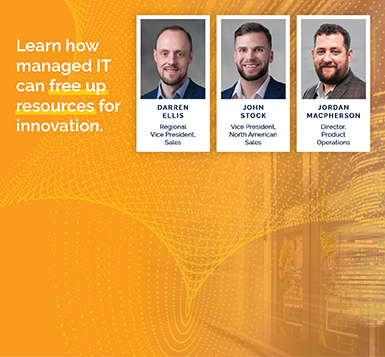More Green Data Center Tips
Park Place Hardware Maintenance
What makes for green data center design? It’s a developing specialty, and many of the leading hyperscale providers are helping other operators keep up with the advances.
There is substantial momentum to go green in the data center, both for ecological reasons and for the cost-savings many sustainability initiatives deliver. We compiled some recommendations a few months ago, but there are always more developments in the field. Here’s another round-up of green data center tips.
Measure and Monitor
“If you can’t measure it, you can’t improve it,” according to Peter Drucker the inventor of modern business management. The first step in a greening project should be to measure the data center infrastructure efficiency (DCiE). Computer Weekly explains that this is “the percentage of power that goes to the IT loads; separating it from the rest that goes to power, cooling, and lighting equipment.” From there, it’s possible to apply data center design concepts to address excessive power demands.
Follow the Leaders
What makes for green data center design? It’s a developing specialty, and many of the leading hyperscale providers are helping other operators keep up with the advances. For example, Microsoft is building all its new data centers to be LEED Gold Certified, a seal of approval for meeting energy efficiency and sustainability standards. The company is pursuing the LEED Volume program, which allows for different buildings based on similar—but not identical—designs to earn LEED Certification as a group. Microsoft has promised to share its basic blueprint.
Facebook is also “open sourcing” its green data center successes as part of the company’s Open Compute project, giving IT leaders even more resources to draw on.
Be Dense
Among the discoveries these companies made some time ago is that high density needn’t be low efficiency, as some had originally believed. Assuming the data center is properly designed, high density installations are the best option for efficiency. Since they also take up less space—meaning that over time less global acreage will be dedicated to data centers—fitting more capacity into a facility can return significant ecological dividends.
Double Dip
Reducing the number of servers running, and switching to more energy-efficient ones are both good moves. But the benefit comes not just in lowering direct server power consumption. In traditional data center environments, a watt saved on servers translates into another watt saved in cooling, thereby doubling the impact. Additionally, green data centers often reduce the need to upgrade facilities to handle greater and greater power and cooling demands. So it could be a triple play!
Love Ugly
The greenest data centers don’t often resemble those high-tech environments from the stock photo archive. The whole point is to push the limits. This can mean running much hotter and darker than data centers once did. Going green can even affect the rack. For instance, Facebook’s Open Compute designs eliminate the fancy bezels and logoed panels on the hardware to improve airflow. The result may not look as sleek, but it works.
With these types of adjustments, enterprise and cloud services data centers are becoming less power hungry, more efficient, and in a boost to the bottom line, less costly to operate on a workload basis. It’s good news for the business and for the planet.
The Environmental Triangle Applied to IT
We’ve seen it emblazoned on blue garbage cans and sustainability-focused advertising for years. “Reduce, Reuse, Recycle” is as much a statement of the environmental movement as “Think Globally. Act Locally.” Not surprisingly, this exhortation applies as much to data centers as it does to our kitchens and offices. Here’s how to make it work for IT.
Reduce.
Businesses got the message about “zombie” servers, those boxes plugged in but doing nothing. Data centers are purging equipment that is slurping power to no good, with virtualization helping to better allocate workloads. It’s an environmentally positive change, because utilization rates for non-virtualized servers run a pitiful 6% to 15%, while virtualization can bring it closer to 30%. Higher utilization rates reduce the number of servers necessary in the environment.
IT shops are also looking to reduce energy consumption directly, for example by purchasing servers with a good Energy Star rating and using all the power management features available to them. Then there is the facilities side. Already, companies are working to keep data centers darker and often hotter. On the horizon are advancements in software-defined power, which could take energy utilization rates to new heights.
Further impact can come from using cloud services for certain types of workloads. Spot Instances, for example, take advantage of spare Amazon capacity otherwise likely to go to waste. Similarly, getting the elasticity to handle sudden, high-traffic events from the cloud can be more efficient than maintaining such “just in case” capacity locally. With all major cloud services providers moving to 100% renewable energy, this can mean a reduction in on-site power, cooling, and space demands and a greener energy-use profile.
Reuse.
The incessant march of technology poses another problem from an environmental perspective, the IT equivalent of single-use grocery bags. Technology systems are made to be disposable.
The OEMs are big on encouraging customers to upgrade to new hardware as quickly as possible. They use various tactics to foster this behavior, such as increasing maintenance costs once the initial one- or three-year contract is up. They may also declare equipment to be “end of support life” (EOSL) and refuse to maintain it at all.
This is where third party maintenance comes in. Companies like Park Place Technologies can help customers reap maximum value from existing IT equipment. First, we counter the OEM upgrade pressure with support costs an average of 60% below their contracts, even on older gear. Then we support the hardware for as long as our customers want, with no EOSL. What’s more, we offer systems-upgrade services that offer a unique alternative to buying new.
In these ways, we can significantly extend hardware lifespan. This not only puts more green in the customer’s pocket, it makes their operations greener, too.
Recycle.
Eventually any IT system will stop functioning or reach a point where it no longer makes sense to operate for energy efficiency, space, or spares cost/availability reasons. Disposing of such hardware properly is an essential part of the “triangle.”
Outsourcing the function can be a great convenience. Why waste internal resources decommissioning hardware, ensuring complete data erasure, and managing reclamation? We can handle the entire process: auditing the environment, assessing the potential for redeployment, and securely recycling any equipment that cannot be used, always in the most environmentally responsible, EC-WEEE compliant manner.
Data center managers are looking to reduce server waste and overall energy consumption, reuse IT hardware for as long as possible, and finally recycle truly obsolete systems in an Earth-friendly manner. Together these efforts are helping to save money and delivering some real sustainability achievements, and we’re glad to be a part of it.
Location, Location, Location for Data Centers
It used to be there were pretty reliable “rules” when it came to siting a data center. Most enterprises would put a facility on site or nearby their headquarters, which tended to cluster data centers in metropolitan areas. Co-location and early cloud services providers (CSPs) also selected urban areas for proximity to customers and telecommunications hubs.
Now the times they are a-changing, and data centers are moving out. For cloud and co-location customers, understanding the advantages of locating data centers in unexpected areas can mean finding lower cost, more ecologically friendly options. So where are data centers going and why?
Heading for Suburbia
Data centers are undergoing some urban flight and the reasons will be familiar to anyone who has looked at residential real estate in big cities. It’s expensive, and space constraints can make expansions difficult or impossible. Add in threats like terrorism and data centers are looking for lower cost, more flexible, possible safer alternatives.
For example, Information Age reported last year that “Historically, London has often been the de-facto location to store your information, but as considerations such as rent, scalability and data growth continue to creep higher on operators’ agendas we are starting to see a much bigger pull towards alternative locations.”
The publication cites BroadGroup research declaring Ireland the best place in the U.K. to establish a data center. It seems the hyperscale providers are already in the know. Both Amazon and Microsoft have facilities there, and Apple is trying to put one in Athenry, Ireland, although some residents are not impressed.
Moving to the Country
Heading across the Irish Sea for greener data center pastures may seem like quite a trip, but many operators are going beyond the suburbs. For example, data centers are taking various approaches to ensuring energy availability and affordability. One response, in the U.S. in particular, has been to seek out underutilized power infrastructure, much of which exists in more remote, post-manufacturing America. Interestingly, data centers may be part of the solution for sparking investment and growth in needy rural communities.
The Cold North
Speaking of power, data centers are also considering the large impact cooling requirements have on power consumption. The hotter the climate, the more money and energy the air conditioning will devour. The natural response? Find places that are naturally cooler. And if you can source renewable energy as well, all the better.
Iceland is getting high billing for its 100% renewable—primarily geothermal—energy infrastructure and cool-to-frigid temperatures, even if it suffers from sometimes high latency and active volcanoes. Following in that vein, Facebook has taken advantage of Finland, siting data centers near the Arctic Circle. Norwegian fjords and the Swiss Alps are also looking pretty chill, too.
In North America, Canada is promoting its climate and ice storage, while several U.S. states have been vying for new data center business. Oregon and Washington are both garnering interest with a combination of temperateness and plentiful hydropower. Wyoming has been promoting its nine months per year of low temperatures. And locations across the Rocky Mountains are providing interesting options as well.
Far Horizons
We’ve discussed Microsoft’s experiments in running sealed data centers in Earth’s ocean depths, as well as the potential for launching such pods into space. It’s clear that when it comes to “location, location, location,” data center leaders are looking at every possibility, from here to Mars and beyond. That can only mean that customers seeking the best price and greenest options in co-location, CSPs, DR, and more will need to expand their horizons, too.



